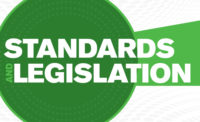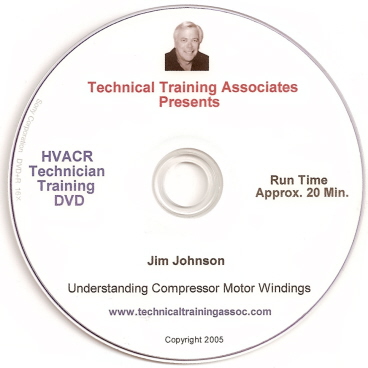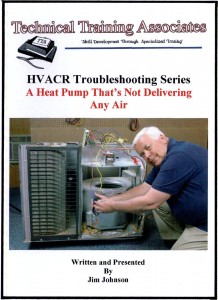
WHY DO MOTORS FAIL?
Certain components of motors degrade with time and operating stress. Electrical insulation weakens over time with exposure to voltage unbalance, over and under-voltage, voltage disturbances, and temperature. Contact between moving surfaces causes wear. Wear is affected by dirt, moisture, and corrosive fumes and is greatly accelerated when lubricant is misapplied, becomes overheated or contaminated, or is not replaced at regular intervals. When any components are degraded beyond the point of economical repair, the motor’s economic life is ended.For the smallest and least expensive motors, the motor is put out of service when a component such as a bearing fails. Depending upon type and replacement cost, larger motors - up to 20 or 50 horsepower (hp) - may be refurbished and get new bearings, but are usually scrapped after a winding burnout. Still larger and more expensive motors may be refurbished and rewound to extend life indefinitely. An economic analysis should always be completed prior to a motor’s failure to ensure that the appropriate repair/replace decision is made.
HOW LONG DO MOTORS LAST?
Answers vary, with some manufacturers stating 30,000 hours, others 40,000 hours, and still others saying, “It depends.” Theusefulanswer is “probably a lot longer with a conscientious motor systems maintenance plan than without one.”Motor life can range from less than two years to several decades under varying circumstances. In the best circumstances, degradation still proceeds, and a failure can occur if it is not detected. Much of this progressive deterioration can be detected by modern predictive maintenance techniques in time for life extending intervention.
Even with excellent selection and care, motors can still suffer short lifetimes in unavoidably severe environments. In some industries motors are exposed to contaminants that are severely corrosive, abrasive, and/or electrically conductive. In such cases, motor life can be extended by purchasing special motors, such as those conforming to the Institute of Electrical and Electronic Engineers (IEEE) 841 specifications, or other severe-duty or corrosion-resistant models.
The operating environment, conditions of use (or misuse), and quality of preventive maintenance determine how quickly motor parts degrade. Higher temperatures shorten motor life. For every 10°C rise in operating temperature, the insulation life is cut in half. This can mislead one to think that purchasing new motors with higher insulation temperature ratings will significantly increase motor life. This is not always true, because new motors designed with higher insulation thermal ratings may actually operate at higher internal temperatures (as permitted by the higher thermal rating). Increasing the thermal rating during rewinding for example, from Class B (130°C) to Class H (180°C), does increase the winding life.
The best safeguard against thermal damage is avoiding conditions that contribute to overheating. These include dirt, under and over-voltage, voltage unbalance, harmonics, high ambient temperature, poor ventilation, and overload operation (even within the service factor).
Bearing failures account fornearly one-half of all motor failures. If not detected in time, the failing bearing can cause overheating and damage insulation, or can fail drastically and do irreparable mechanical damage to the motor. Vibration trending is a good way to detect bearing problems in time to intervene.
With bearings often implicated in motor failures, the L10h rating of a bearing may be cause for concern. The L10 rating is the number of shaft revolutions until 10 percent of a large batch of bearings fails under a very specific test regimen. It does not follow that simply having a large L10 rating will significantly extend motor bearing life. Wrong replacement bearings, incorrect lubricant, excessive lubricant, incorrect lubrication interval, contaminated lubricant, excessive vibration, misaligned couplings, excessive belt tension, and even power quality problems can all destroy a bearing. Always follow the manufacturer’s lubrication instructions and intervals.
Make sure motors are not exposed to loading or operating conditions in excess of limitations defined in manufacturer specifications and National Electrical Manufacturers Association (NEMA) standard MG1. This NEMA standard defines limits for ambient temperature, voltage variation, voltage unbalance, and frequency of starts.
Suggested Actions
• A competent motor repair service center can often pinpoint failure modes and indicate optional features or rebuild methods to strengthen new and rewound motors against critical stresses.• Follow motor manufacturers’ recommendations and user guides to protect out-of-service motors from humidity, vibration, and corrosion exposure.
• Establish and follow a good predictive and preventive maintenance program.
Resources
National Electrical Manufacturers Association (NEMA)- For information on NEMA Premium standards, visit www.nema.org.Electrical Apparatus Service Association (EASA)- Provides guidelines on motor repair/rewind practices (www.easa.org).
Motor Decisions Matter- Download a motor management planning kit (www.motorsmatter.org) that contains advice on building an in-plant motor inventory, decision rules, critical planning tips, and motor replacement.
U.S. Department of Energy (DOE)- Visit the BestPractices Website at www.eere.energy.gov/industry/bestpractices to access various energy efficiency resources.
Reprinted from Motor Systems Tip Sheet #3, “Extend the Operating Life of Your Motor,” from the U.S. Department of Energy’s Office of Energy Efficiency and Renewable Energy. For more information, visit www.eere.energy.gov.
Publication date:05/19/2008







